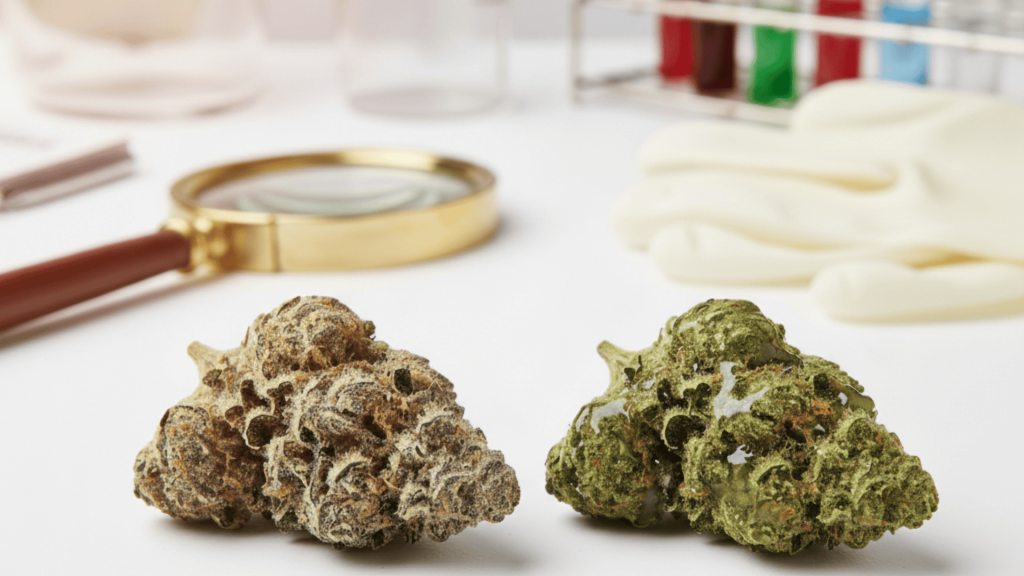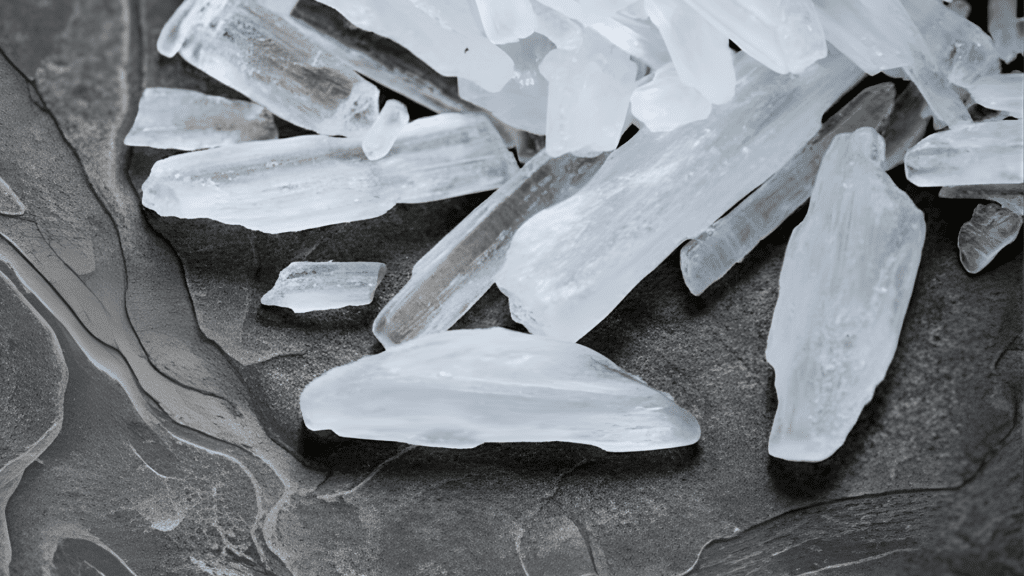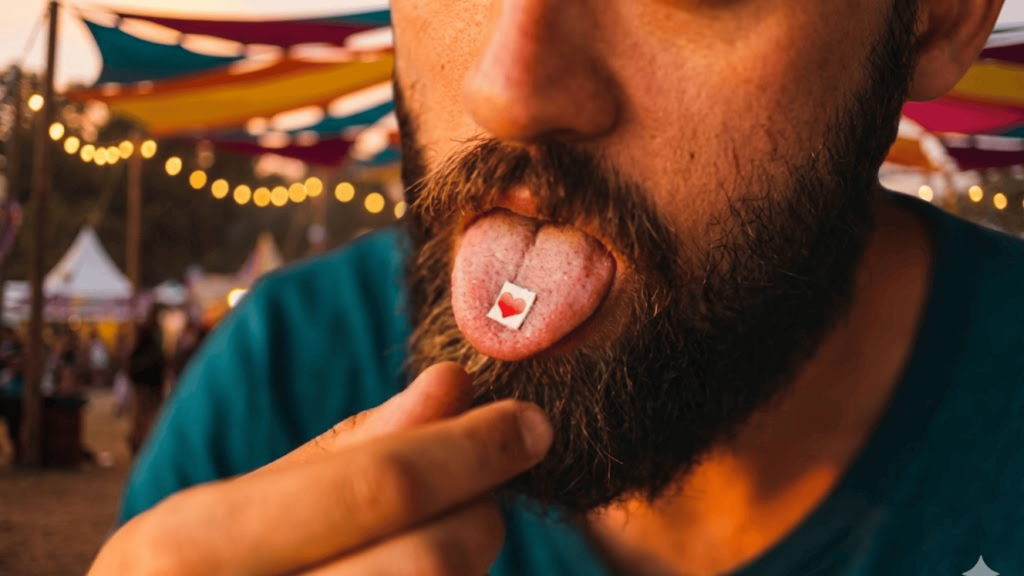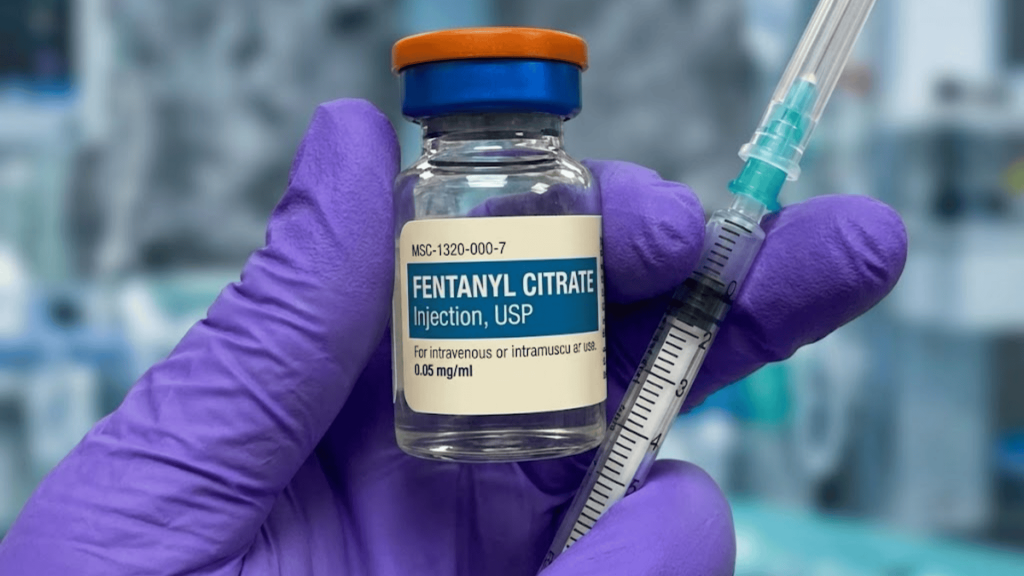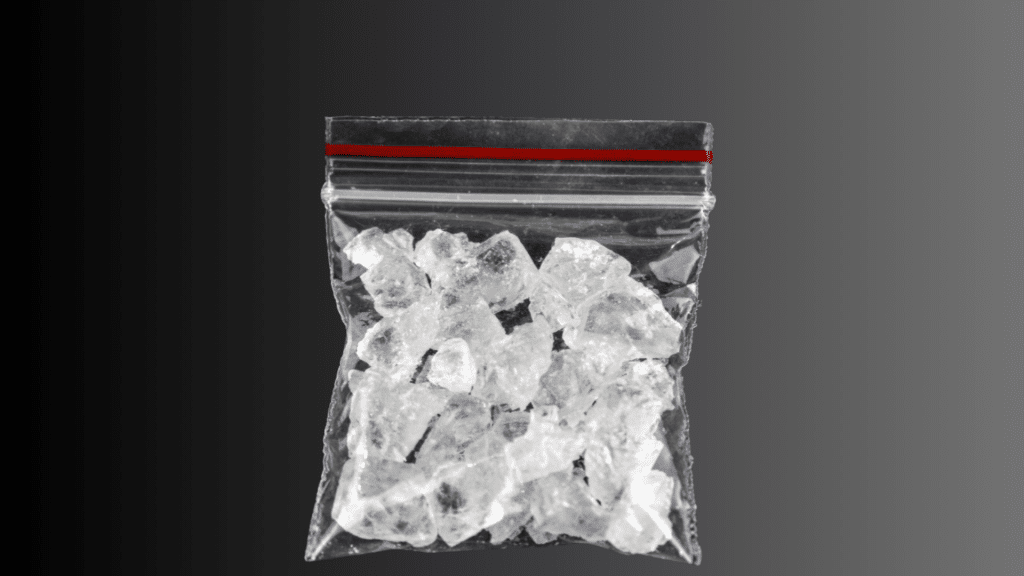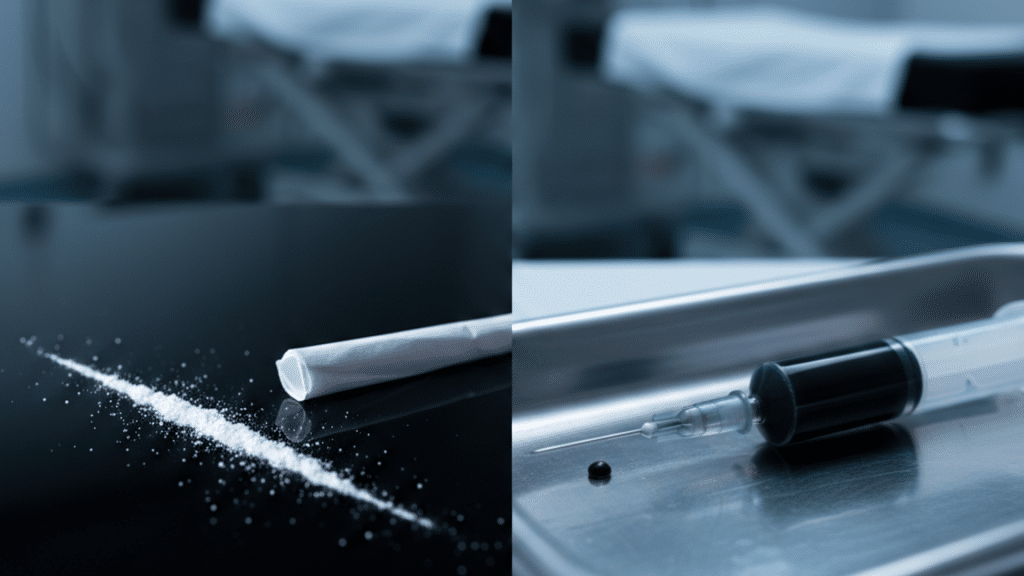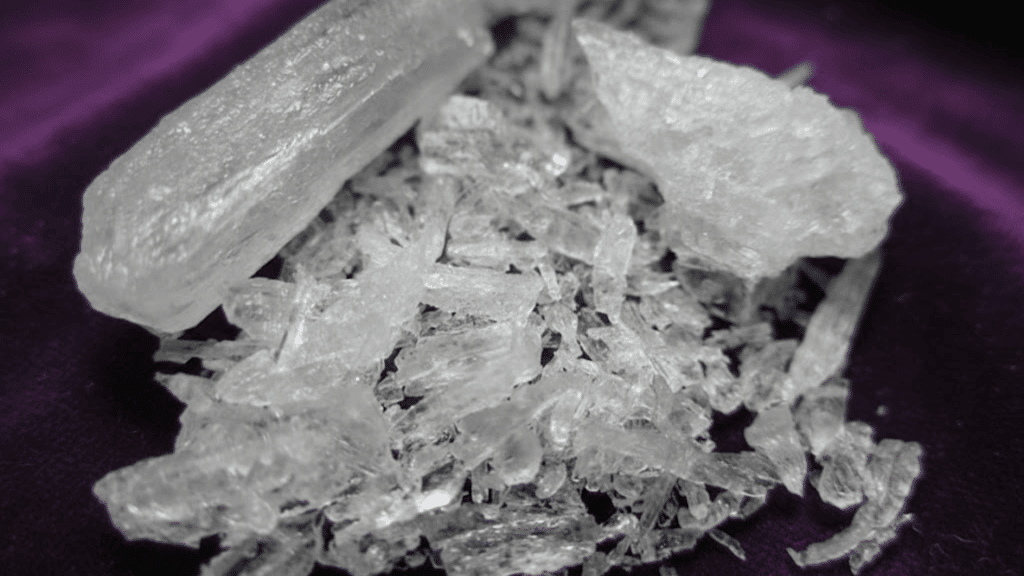I’ve been hearing more and more people talk about “sprayed weed” lately, and honestly, it’s concerning.
If you’re buying cannabis, especially from unverified sources, you might be wondering if what you’re getting is actually safe or if it’s been tampered with. I’ve done some digging into this issue because it’s something every consumer should understand.
In this guide, I’m going to walk you through what sprayed weed actually is, why some sellers resort to this sketchy practice, and most importantly, the health risks you need to know about.
I’ll also share practical ways to spot contaminated cannabis and give you some solid precautions to protect yourself.
Just a heads up: this is purely informational. I’m not endorsing anything or offering medical advice. Let’s get into it and make sure you know what you’re really putting in your body.
What Does “Sprayed Weed” Mean?
Sprayed weed refers to cannabis that’s been coated with various substances after harvest. Sellers do this to manipulate the product’s appearance, smell, weight, or perceived potency.
These additives can include chemicals, synthetic compounds, or other materials that make low-quality weed look more appealing or weigh more than it actually should.
It’s important to understand how sprayed weed differs from laced weed:
| Sprayed Weed | Laced Weed |
|---|---|
| Coated with additives or chemicals | Mixed with other psychoactive drugs |
| Alters appearance, smell, or weight | Changes the actual effects and high |
| Doesn’t typically modify the high | Introduces unpredictable substances |
| Primarily a deceptive sales tactic | Potentially more dangerous to users |
Both practices are deceptive and risky, but they serve different purposes for dishonest sellers.
Why Do Sellers Spray Weed?
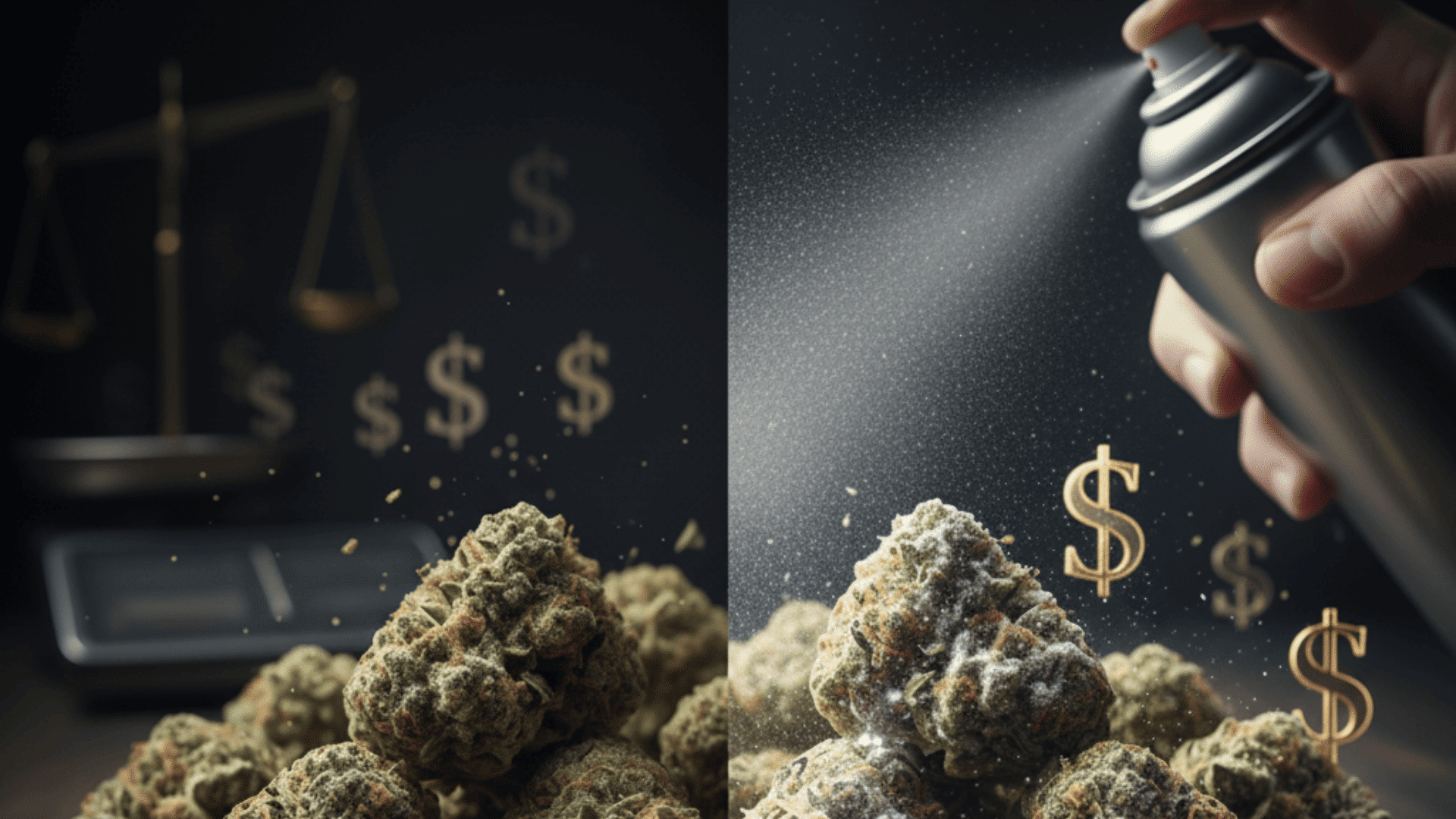
Sellers who spray weed are usually motivated by profit and deception. They want to make inferior products appear premium or increase the weight to charge more.
Here’s a breakdown of the main tactics they use and why these practices are both tempting for dishonest sellers and dangerous for consumers.
1. To Increase Weight
Some sellers spray cannabis with substances like sugar water, hairspray, or even glass particles to make buds heavier.
Since cannabis is often sold by weight, adding even a small amount of extra mass can significantly boost profits. This tactic is especially common with lower-grade flower that wouldn’t command high prices on its own.
- Why It’s a Pro (for sellers): More weight means more money per sale without needing higher-quality product.
- Why It’s a Con (for buyers): You’re paying premium prices for additives that have no value and may be harmful to inhale.
2. To Improve Appearance
Glossy sprays or coating agents can make dull, low-quality buds look “frosty” and covered in trichomes.
This visual deception tricks buyers into thinking they’re getting potent, well-cultivated cannabis when they’re actually getting an inferior product dressed up with chemicals.
The sparkly, crystalline appearance mimics what naturally occurs in high-quality strains.
- Why It’s a Pro (for sellers): Eye-catching buds sell faster and justify higher prices in the market.
- Why It’s a Con (for buyers): The appealing look is fake, and the chemicals creating that shine can be toxic when smoked.
3. To Add Smell or Mask Defects
Synthetic terpenes or fragrance sprays can make old, improperly cured, or low-grade cannabis smell like premium flower.
These additives cover up musty odors, lack of natural aroma, or even the smell of mold. Dishonest sellers use this tactic to pass off stale or contaminated products as fresh and potent.
- Why It’s a Pro (for sellers): Defective or aged inventory becomes sellable again instead of being a total loss.
- Why It’s a Con (for buyers): You might be inhaling moldy cannabis or harsh chemicals disguised by artificial scents.
4. To Mask Low-Quality Flower
When cannabis is poorly grown, harvested too early, or improperly stored, it lacks the characteristics consumers want.
Spraying can temporarily hide these flaws by adding artificial shine, weight, and smell. This allows sellers to move subpar products that would otherwise be unsellable or worth very little.
- Why It’s a Pro (for sellers): Failed crops or bad batches can still generate revenue instead of being discarded.
- Why It’s a Con (for buyers): You’re unknowingly consuming inferior cannabis that won’t deliver the experience you’re paying for and may contain harmful contaminants.
Common Substances Used in Spraying
Dishonest sellers use a variety of substances to alter cannabis, ranging from relatively harmless additives to genuinely dangerous chemicals.
Understanding what might be sprayed on your weed helps you grasp the severity of the risks involved.
| Substance | Purpose | Common Examples |
|---|---|---|
| Synthetic cannabinoids or THC distillate | To increase perceived potency or create psychoactive effects on inert plant matter | Spice, K2, synthetic THC analogs |
| Sugars, adhesives, sticky agents | To add weight and create a glossy, “frosty” appearance | Sugar water, hairspray, vegetable oil |
| Pesticides, chemical fragrances, or synthetic terpenes | To add an artificial smell or mask defects like mold or poor curing | Commercial air fresheners, synthetic terpene blends, and agricultural chemicals |
| Glass, grit, or inert fillers | To increase weight and create a sparkling appearance (extreme cases) | Ground glass, sand, silica |
Inhaling these substances can cause serious respiratory issues, chemical burns, toxicity, and unpredictable reactions. Some additives, particularly synthetic cannabinoids and glass particles, have been linked to hospitalizations and severe health complications.
Risks & Health Dangers of Sprayed Weed
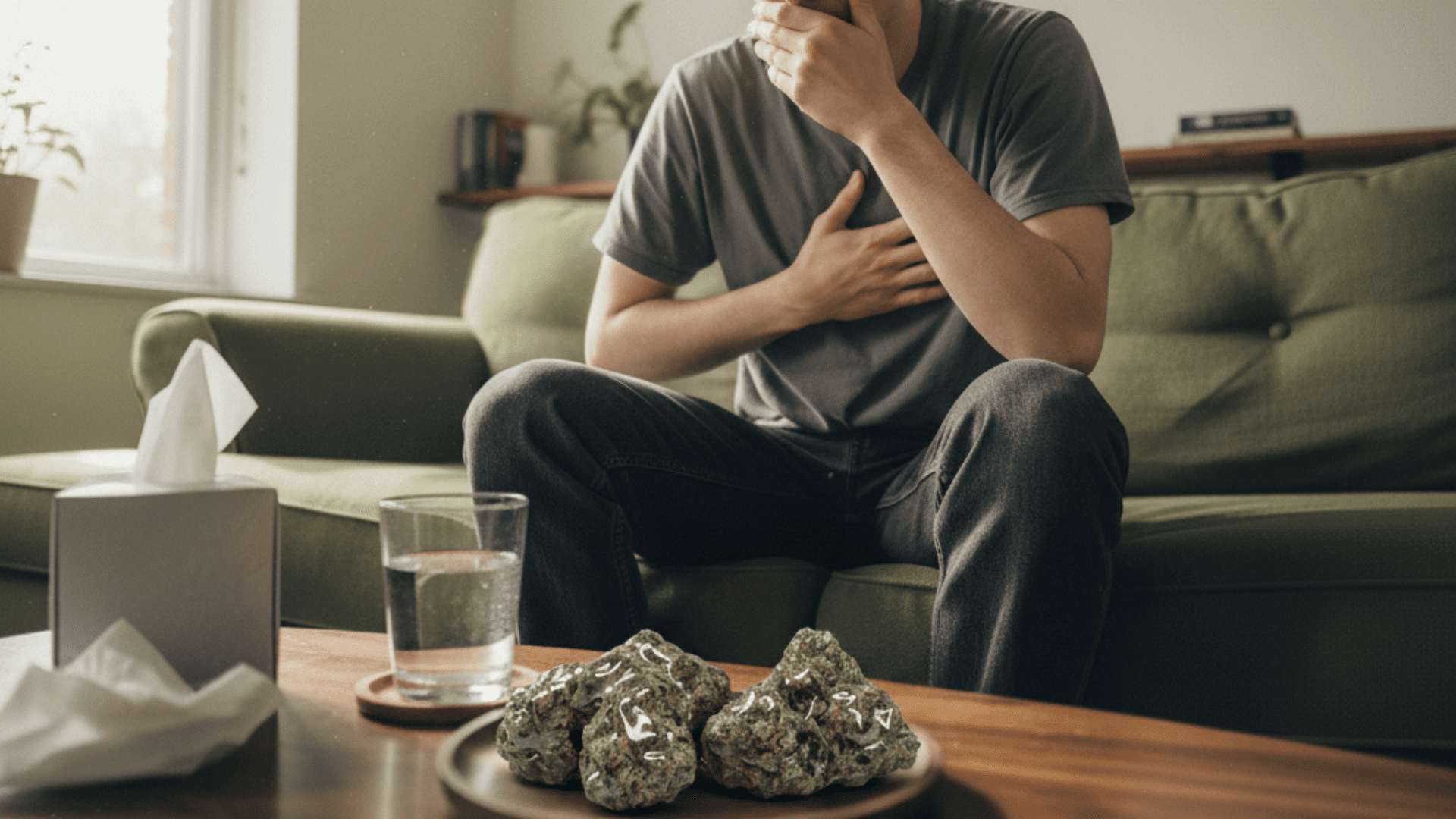
Smoking or vaping sprayed weed exposes you to hazards that go far beyond what you’d experience with pure cannabis.
The health consequences can range from mild irritation to serious medical emergencies, depending on what’s been added to the product.
Physical Health Dangers
When you inhale sprayed cannabis, you’re introducing unknown chemicals directly into your lungs. These substances weren’t meant to be burned and inhaled, which creates several immediate risks:
- Respiratory Irritation: Coughing, wheezing, chest tightness, and difficulty breathing from chemical exposure
- Toxic Byproducts: Burning additives can produce formaldehyde, acetaldehyde, and other carcinogens
- Allergic Reactions: Skin rashes, throat swelling, or severe immune responses to foreign substances
- Lung Damage: Chemical burns, inflammation, or long-term scarring from glass particles or harsh chemicals
- Pesticide Poisoning: Nausea, dizziness, headaches, and potential organ damage from agricultural chemicals
Additive Toxicity and Psychological Risks
Synthetic cannabinoids and other additives create unpredictable dangers that extend beyond respiratory issues. These substances affect your body and brain in ways that natural cannabis doesn’t, leading to severe complications:
- Synthetic Cannabinoid Effects: Severe anxiety, paranoia, hallucinations, rapid heart rate, seizures, or psychosis
- Glass Particle Damage: Internal cuts and bleeding in your respiratory system
- Chemical Toxicity: Unpredictable reactions to pesticides, adhesives, or fragrance compounds
- Behavioral Changes: Dangerous psychological effects requiring emergency medical intervention
Sprayed weed introduces unknown variables into something you’re putting into your body. While natural cannabis has well-documented effects, these additives create risks that are difficult to predict and potentially life-threatening.
How to Spot Sprayed Weed?
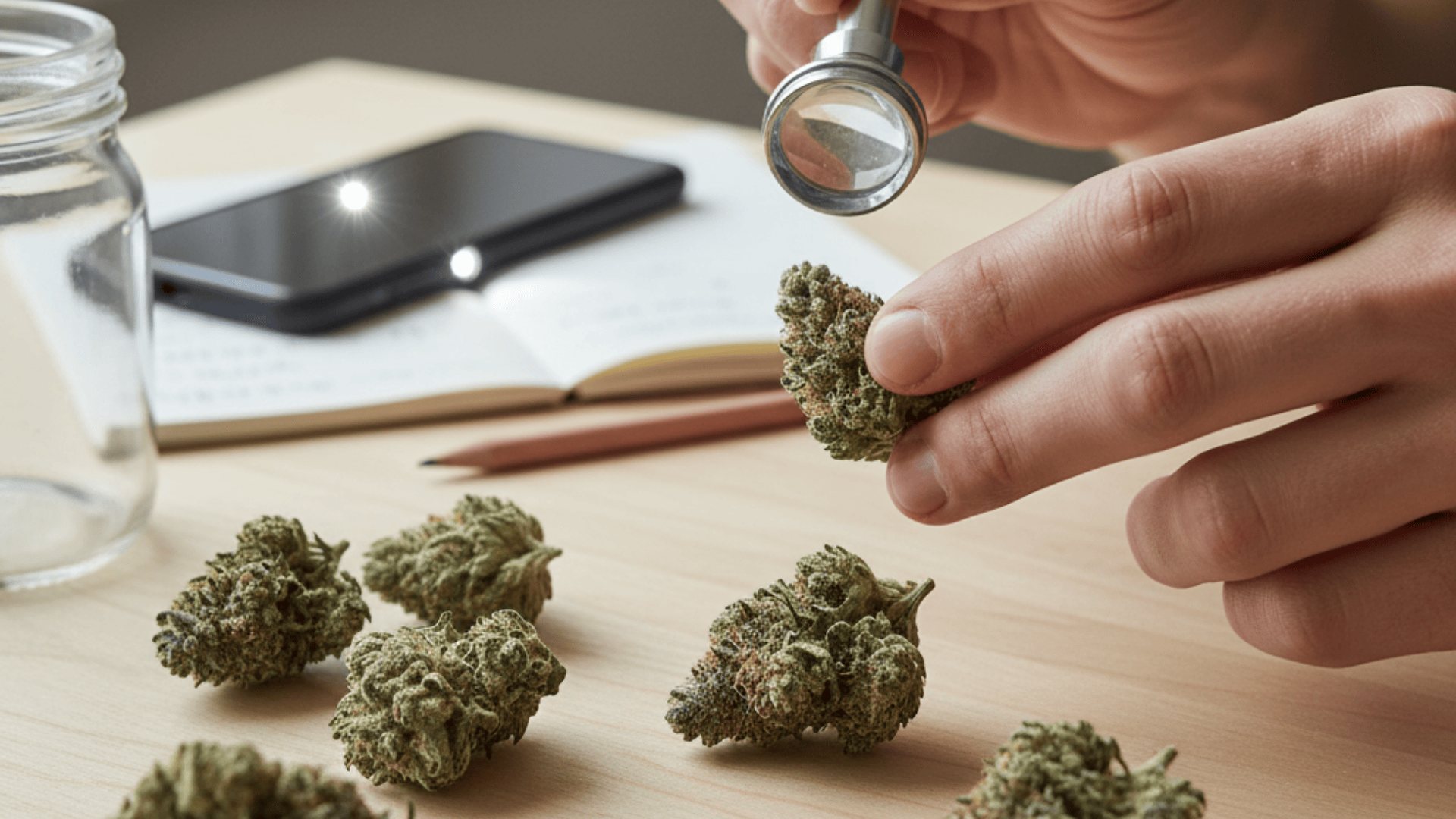
Knowing how to identify sprayed weed can protect you from serious health risks. While no single sign guarantees contamination, multiple red flags should make you think twice before using a product.
Here are the key warning signs to watch for.
- Visual Cues: Buds that look overly glossy, shiny, or have an unnatural sparkle may be coated with additives or glass particles.
- Texture Test: If the bud feels excessively sticky beyond normal resin, leaves a greasy film on your fingers, or has an unusual coating, it’s likely been sprayed.
- Smell Check: A chemical, perfumed, or artificially sweet scent instead of natural cannabis aroma indicates fragrance additives or synthetic terpenes.
- Burn Behavior: Harsh smoke, crackling sounds, unusual chemical smell when burning, or an unpleasant aftertaste all suggest contamination.
- Residue Test: Gently rub the bud between your fingers; if it leaves behind powder, grit, or strange residue, it’s been tampered with.
If you notice any combination of these signs, it’s best to avoid that product entirely. Trust your instincts when something seems off about the cannabis you’re examining.
Legal & Market Trends: Where Sprayed Weed Shows Up
Sprayed weed predominantly appears in underground and non-regulated markets, especially in regions where legal cannabis access is limited.
Without oversight, sellers can easily tamper with products to maximize profits. However, even some legal markets have seen misuse of flavor sprays or distillate coatings on buds to artificially boost THC test results or enhance visual appeal.
Research examining state-level cannabis regulations found significant variations in contaminant testing requirements across jurisdictions.
The “spray pack” phenomenon has gained attention, particularly on the East Coast, where buds are intentionally sprayed with terpenes or coatings and marketed as premium products.
What to Do If You Suspect Sprayed Weed?
If you suspect your cannabis has been sprayed with additives or contaminants, taking immediate action can protect your health and help prevent others from being harmed.
Here’s what you should do when you encounter a suspicious product:
- Stop Using It Immediately: Do not consume any cannabis you suspect has been contaminated, regardless of how much you paid for it.
- Consider Lab Testing: In jurisdictions where cannabis testing services are available, get the product analyzed to confirm contamination.
- Dispose Safely or Return: If purchased from a licensed dispensary, return the product and file a complaint; otherwise, dispose of it properly.
- Report the Issue: Contact local authorities, health departments, or the dispensary where you purchased it to document the contamination.
- Seek Medical Attention: If you experience respiratory problems, nausea, dizziness, or allergic reactions after use, consult a healthcare provider immediately.
Your health is more important than the money you spent on the product. Taking these steps not only protects you but also helps authorities identify problematic sources and potentially saves other consumers from similar risks.
Resources & References
For a deeper understanding of sprayed weed and cannabis contamination, several authoritative resources provide valuable insights.
The National Institutes of Health published comprehensive research on cannabis contaminants, covering sources, distribution, and human toxicity.
Additional state-level regulatory analysis examines testing requirements and public health implications.
The CDC provides cannabis health facts and statistics for consumers seeking reliable information.
These resources offer evidence-based perspectives on contamination risks, regulatory gaps, and health effects. Always consult verified sources when researching cannabis safety to make informed decisions about consumption.
Summing It Up
I know this topic isn’t easy to think about, but understanding sprayed weed could genuinely protect your health.
The reality is that contaminated cannabis exists in both legal and illegal markets, and being informed gives you the power to make safer choices.
Trust your instincts when something seems off about your product. Remember, no purchase is worth risking your respiratory health or exposing yourself to unknown chemicals.
Stay vigilant, buy from reputable sources when possible, and never hesitate to walk away from suspicious cannabis.
What’s been your experience with product quality? Share your thoughts in the comments below.

